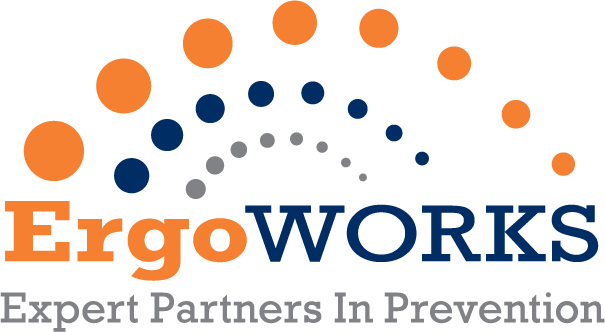Implementing a ergonomics program at your company can sound very overwhelming. We get it - you have anough on your plate already! Here are a few factors to get you moving in the right direction. At ErgoWorks, we are able to step in line with you and help your company move to the next step, support your current ergonomic improvements, or provide assessment and monitoring of the program over time.
Understanding the Importance of Ergonomics in the Workplace
Ergonomics is the study of work, or, how the worker and the work environment interact. It focuses on designing and arranging workspaces, tools, and equipment in a way that minimizes the risk of injuries and maximizes productivity. By understanding the importance of ergonomics, employers can create a work environment that promotes the safety and health of their employees.
One key aspect of ergonomics is the prevention of musculoskeletal disorders (MSDs). These are conditions that affect the muscles, joints, tendons, and ligaments of the musculoskeletal system. MSDs can result from tasks that involve repetitive motions, awkward postures, or excessive force. By implementing ergonomic principles, employers can reduce the risk of MSDs and improve the overall health of their workforce.
In addition to preventing injuries, ergonomics also improved productvity by allowing employees to quickly and easily obtain parts, tools and equipment on the production floor. Ergonomic improvments for the office workspace, such as proper chair height, adjustable desks, and ergonomic keyboards, can significantly improve employee comfort and reduce fatigue.
Overall, understanding the importance of ergonomics in the workplace is essential for creating a safe and efficient work environment. By prioritizing ergonomics, employers can protect their employees from injuries, improve productivity, and enhance the overall well-being of their workforce.
Identifying Workplace Hazards
Before implementing ergonomic solutions, it is crucial to identify your specific company's workplace hazards. Hazards can vary depending on the industry and specific job tasks, but some common ones include heavy physical demands, sustained postions, and awkward postures.
Lifting heavy objects incorrectly can lead to back injuries and strain on the muscles. Sustained posture, such leaning forward to visualize assembly parts, can result in upper back and neck pain. Awkward postures to reach areas of machinery or equipment can put excessive strain on joints and muscles. These can cause musculoskeletal disorders over time.
By conducting a thorough analysis of the workplace, employers can identify these hazards and take appropriate measures to address them. This may involve redesigning workstations, providing ergonomic equipment, implementing proper lifting techniques, promoting good posture, and improving lighting conditions. By mitigating specific hazards, employers can significantly reduce the risk of injuries and create a safer work environment.
Implementing Ergonomic Solutions
Implementing ergonomic solutions is a proactive approach to prevent workplace injuries and improve productivity. There are various ergonomic solutions that employers can consider, depending on the specific needs of their workforce.
One common ergonomic solution is to provide height adjustable equipment. Adjustable production equipment and worktables allow employees to customize their workstations to fit their individual needs. This promotes improved posture for each employee and reduces the risk of musculoskeletal disorders.
For the office employee, implementing ergonomic solutions such as ergonomic keyboards, mice, and monitors can reduce strain on the neck, upper back, and wrists.
Furthermore, employers can consider implementing job rotation or job enlargement to reduce the risk of repetitive motion injuries. By allowing employees to switch between tasks or adding more variety to their job responsibilities, the strain on specific muscle groups is reduced by allowing increased variety of postures during the work day.
Overall, implementing ergonomic solutions involves a combination of ergonomic furniture, tools, and work practices. By investing in these solutions, employers can improve productivity and employee satisfaction, while also reducing the risk of injury.
Training and Educating Employees on Ergonomics
By educating employees on ergonomics, employers can empower them to take an active role in creating a safe and efficient work environment. Training sessions can cover topics such as body mechanics for safe lifting, proper posture, and the correct use of ergonomic equipment. Employees can also receive coaching on setting up their workstations ergonomically and adjusting equipment to their needs.
In addition to training, ongoing education and communication are key. Employers can provide resources that reinforce ergonomic practices. Regular training on the importance of ergonomics, proper posture while working, and how to report ergonomic concerns, questions, and suggestions for improvements can help employees maintain good ergonomic habits and stay engaged in best practices.
Evaluating the Impact of Ergonomics on Safety and Efficiency
After implementing ergonomic solutions and providing training, it is important to evaluate the impact of an ergonomics program. This evaluation helps employers assess the effectiveness of their time and money and identify areas for improvement.
One way to evaluate the impact of ergonomics is to track and analyze injury rates. By comparing injury data before and after implementing ergonomic measures, employers can determine if there has been a significant reduction in workplace injuries. They can also identify specific types of injuries that may still be occurring and explore additional measures to address them.
Employee feedback on ergonomic changes is key. The best ergonomist may be your employees! Conducting comfort surveys or interviews to gather feedback from employees about their experience with the ergonomic changes can be very effective. This feedback can provide valuable insights into the employee experience with the changes. In regards to tracking objective changes as a result of ergonomic changes, employers can track key performance indicators (KPIs) and compare them before and after implementing ergonomic solutions.
By regularly evaluating the impact of ergonomics on safety and efficiency, employers can make informed decisions about any necessary adjustments or further investments. This continuous improvement process ensures that the workplace remains safe, productive, and supportive of employee well-being.


